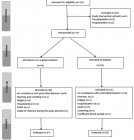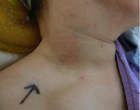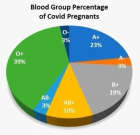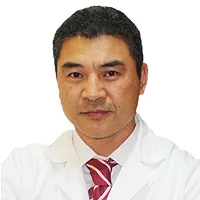Abstract
Research Article
Assessment of shoulder pain and somatic dysfunction in young competitive swimmers: Preventive Osteopathic Manipulative Treatment
Fanny Granger, Marion Etevenard, Jean-Pascal Kily and Martin Garet*
Published: 09 August, 2019 | Volume 4 - Issue 3 | Pages: 061-066
Context: Shoulder pain is one of the most frequent reported complaints in intensive competitive swimming. The so-called ‘swimmers’ shoulder’ has been widely explored and has been reported sometimes without specific reference to contributing mechanisms or structures. Somatic dysfunction is defined as an impaired or altered function of related components of the somatic system and may appear in the early stage of pain feeling.
Aim: To evaluate somatic dysfunctions in a group of young competitive swimmers with and without shoulder pain and its relationship with the shoulder’s mobility along with the efficacy of an osteopathic manipulative treatment (OMT) on shoulder’s mobility, pain, and comfort of swimming.
Material and method: 20 competitive swimmers (14.6 ± 1.3 ys; 11.6 ± 2.4 hs.wk-1) were divided into two groups, with and without shoulder pain (SPG/CG). Before and after light touch/OMT, and 1 week later, somatic dysfunctions, shoulder’s range of mobility, pain, and swimming comfort were assessed by 2 independent osteopaths.
Results: Somatic dysfunctions were observed in both groups without significant differences in the number or localization and were independent of severity of pain. In the SPG, pain decreased significantly after OMT (6.1 ± 1.9 vs. 3.9 ± 1.8; p = 0.001) and remained stable 1-week later (P = NS). Shoulder’s mobility was lower on the aching shoulder in the “shoulder pain” group when compared to the control group on flexion and abduction tests but not on extension or adduction tests. Following OMT, only abduction improved when compared to light touch. Comfort in swimming was reported as “better” in both OMT/light touch groups.
Conclusion: There is no difference between light touch and OMT as both decreased pain and increased comfort in swimming but abduction range of motion only improved in the OMT group.
Read Full Article HTML DOI: 10.29328/journal.jsmt.1001045 Cite this Article Read Full Article PDF
Keywords:
Swimming; Shoulder; Prevention; Mobility FullText PDF
References
- https://www.nhs.uk/live-well/exercise/swimming-for-fitness/ 2019
- Bak K. Nontraumatic glenohumeral instability and coracoacromial impingement in swimmers. Scand J Med Sci Sports. 1996; 6: 132-144. PubMed: https://www.ncbi.nlm.nih.gov/pubmed/8827842
- Harrington S, Meisel C, Tate AA. cross sectional study examining shoulder pain and disability in division I female swimmers. J Sport Rehabil. 2014; 23: 65-75. PubMed: https://www.ncbi.nlm.nih.gov/pubmed/23945068
- Bulter D, Funk L, Mackenzie TA, Herrington LC. Sorting swimmer’s shoulders: an observational study on swimmers that presented to a shoulder surgeon. Int J Shoulder Surg. 2015; 9: 90-93. PubMed: https://www.ncbi.nlm.nih.gov/m/pubmed/26288538/
- Wolf BR, Ebinger AE, Lawler MP, Britton CL. Injury patterns in division I collegiate swimming. Am J Sports Med. 2009; 37: 2037–2042. PubMed: https://www.ncbi.nlm.nih.gov/pubmed/19633232
- Wanivenhaus F, Fox AJ, Chaudhury S, Rodeo SA. Epidemiology of injuries and prevention strategies in competitive swimmers. Sports Health. 2012; 4: 246–251. PubMed: https://www.ncbi.nlm.nih.gov/pubmed/23016094
- McMaster WC, Troup J. A survey of interfering shoulder pain in United States competitive swimmers. Am J Sports Med. 1993; 21: 67-70. PubMed: https://www.ncbi.nlm.nih.gov/pubmed/8427371
- Borstad JD. Resting position variables at the shoulder: evidence to support a posture-impairment association. Phys Ther. 2006; 86: 549-557. PubMed: https://www.ncbi.nlm.nih.gov/pubmed/16579671
- Launder KG, Wenig M, Selkow NM, Williams J, Post E. Forward shoulder posture in collegiate swimmers: a comparative analysis of muscle-energy techniques. J Athl Train. 2015; 50: 1133-1139. PubMed: https://www.ncbi.nlm.nih.gov/pubmed/26509682
- Allegrucci M, Whitney SL, Irrgang JJ. Clinical implications of secondary impingement of the shoulder in freestyle swimmers. J Orthop Sports Phys Ther. 1994; 20: 307-318. PubMed: https://www.ncbi.nlm.nih.gov/pubmed/7849751
- Hanson JH, Ostrem JD, Davies BL. Effect of Kinesiology Taping on Upper Torso Mobility and shoulder Pain and Disability in US Masters National Championship Swimmers: An Exploratory Study. J Manipulative Physiol Ther. 2019; 42: 247-253.PubMed: https://www.ncbi.nlm.nih.gov/pubmed/31221494
- Heinlein SA, Cosgarea AJ. Biomechanical Considerations in the Competitive Swimmer's Shoulder. Sports Health. 2010; 2: 519-525. PubMed: https://www.ncbi.nlm.nih.gov/pmc/articles/PMC3438875/
- Sein ML, Walton J, Linklater J, Harris C, Dugal T, et al. Reliability of MRI assessment of supraspinatus tendinopathy. Br J Sports Med. 2007; 41: 9. PubMed: https://www.ncbi.nlm.nih.gov/pubmed/17289860
- Sein ML, Walton J, Linklater J, Appleyard R, Kirkbride, B, et al. Shoulder pain in elite swimmers: primarily due to swim-volume-induced supraspinatus tendinopathy. Br J Sports Med. 2010; 44: 105-113.
- Struyf F, Tate A, Kuppens K, Feijen S, Michener LA. Musculoskeletal dysfunctions associated with swimmers' shoulder. Br J Sports Med. 2017; 51: 775-780.PubMed: https://www.ncbi.nlm.nih.gov/pubmed/28189997
- McClure P, Greenberg E, Kareha S. Evaluation and management of scapular dysfunction. Sports Med Arthrosc. 2012; 20: 39-48. PubMed: https://www.ncbi.nlm.nih.gov/pubmed/22311292
- Lewis JS. Subacromial impingement syndrome. A musculoskeletal condition or a clinical illusion? Phys Ther Rev. 2011; 11: 388-398.
- Brumm LF, Janiski C, Balawender JL, Feinstein A. Preventive osteopathic manipulative treatment and stress fracture incidence among collegiate cross-country athletes. J Am Osteopath Assoc. 2013; 113: 882-90. PubMed: https://www.ncbi.nlm.nih.gov/pubmed/24285030
- Ross G, Macfarlane C, Vaughan B. Combined osteopathy and exercise management of Achilles tendinopathy in an athlete. J Sports Med Phys Fitness. 2018; 58: 106-112. PubMed: https://www.ncbi.nlm.nih.gov/pubmed/28409510
- Brolinson PG, Smolka M, Rogers M, Sukpraprut S, Goforth MW, et al. Precompetition manipulative treatment and performance among Virginia Tech athletes during 2 consecutive football seasons: a preliminary, retrospective report. J Am Osteopath Assoc. 2012; 112: 607-615. PubMed: https://www.ncbi.nlm.nih.gov/pubmed/22984234
- Ward RC, executive ed. Foundations for Osteopathic Medicine. 2nd ed. Philadelphia, PA: Lippincott, Williams & Wilkins. 2002.
- Paulet T, Fryer G. Inter-examiner reliability in palpation for tissue texture abnormality in the thoracic paraspinal region. IJOM. 2009; 12: 92-96.
- Day JA, Stecco C, Stecco A. Application of fascial manipulation technique in chronic shoulder pain-anatomical basis and clinical implications. J Bodyw Mov Ther. 2009; 13: 128-135. PubMed: https://www.ncbi.nlm.nih.gov/pubmed/19329049
- Consorti G, Basile F, Pugliese L, Petracca M. Interrater Reliability of Osteopathic Sacral Palpatory Diagnostic Tests Among Osteopathy Students. J Am Osteopath Assoc. 2018; 118: 637-644. PubMed: https://www.ncbi.nlm.nih.gov/pubmed/30128497
Figures:
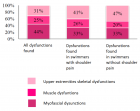
Figure 1

Figure 2
Similar Articles
-
Shoulder muscle weakness effects on muscle hardness around the shoulder joint and scapulaeKubota Atsushi*,Takayanagi Chiho,Kishimoto Kohei. Shoulder muscle weakness effects on muscle hardness around the shoulder joint and scapulae. . 2020 doi: 10.29328/journal.jsmt.1001049; 5: 001-007
-
Retrospective Analysis of Non-Contact ACL Injury Risk: A Case Series Review of Elite Female AthletesLee Herrington*,Ros Cooke. Retrospective Analysis of Non-Contact ACL Injury Risk: A Case Series Review of Elite Female Athletes. . 2017 doi: 10.29328/journal.jsmt.1001002; 2: 001-008
-
The Utility of Acupuncture in Sports Medicine: A Review of the Recent LiteratureMichael Malone*. The Utility of Acupuncture in Sports Medicine: A Review of the Recent Literature. . 2017 doi: 10.29328/journal.jsmt.1001004; 2: 020-027
-
Joint Functional Screening for Older Adults: Clinical Prevention of Accidental FallBalwant S Bains*. Joint Functional Screening for Older Adults: Clinical Prevention of Accidental Fall. . 2017 doi: 10.29328/journal.jsmt.1001013; 2: 091-094
-
Injuries of the shoulder sustained by Surfboard ridersSimon Dimmick*,Jillian Patterson,Patrick Sheehan,Suzanne Anderson,Graeme MacDougal. Injuries of the shoulder sustained by Surfboard riders. . 2018 doi: 10.29328/journal.jsmt.1001021; 3: 010-016
-
Perception of Nutrition and Exercise as a Tool in Controlling Cardiovascular Diseases among the Elderly in Anambra StateAlagbu Chukwubuikem Eugene*,Alagbu Chinwe Adline,Chike Ijezie Ifeoma Blessing,Agwubike Elias Okey. Perception of Nutrition and Exercise as a Tool in Controlling Cardiovascular Diseases among the Elderly in Anambra State. . 2017 doi: 10.29328/journal.jsmt.1001017; 2: 123-128
-
Administration of Non-Pharmachologic Intervention in the control of Hypertension among selected volunteer retirees in Awka Metropolis Anambra State NigeriaAlagbu Chukwubuikem Eugene*,Alagbu Chinwe Adline,Chike Ijezie Ifeoma Blessing,Agwubike Elias Okey. Administration of Non-Pharmachologic Intervention in the control of Hypertension among selected volunteer retirees in Awka Metropolis Anambra State Nigeria. . 2017 doi: 10.29328/journal.jsmt.1001018; 2: 129-137
-
Chondrogenic re-differentiation potential of chondrocytes after monolayer culture: Comparison between osteoarthritis and young adult patientsKazuki Oishi*,Shusa Ohshika,Ken-Ichi Frukawa,Eiichi Tsuda,Yuji Yamamoto,Yasuyuki Ishibashi. Chondrogenic re-differentiation potential of chondrocytes after monolayer culture: Comparison between osteoarthritis and young adult patients. . 2019 doi: 10.29328/journal.jsmt.1001038; 4: 016-023
-
Assessment of shoulder pain and somatic dysfunction in young competitive swimmers: Preventive Osteopathic Manipulative TreatmentFanny Granger,Marion Etevenard,Jean-Pascal Kily,Martin Garet*. Assessment of shoulder pain and somatic dysfunction in young competitive swimmers: Preventive Osteopathic Manipulative Treatment. . 2019 doi: 10.29328/journal.jsmt.1001045; 4: 061-066
-
Effectiveness of physical rehabilitation on sphygmography and blood pressureGrashchenkova АN*,Puzin SN,Bogova ОТ. Effectiveness of physical rehabilitation on sphygmography and blood pressure. . 2023 doi: 10.29328/journal.jsmt.1001063; 8: 001-003
Recently Viewed
-
Environmental Factors Affecting the Concentration of DNA in Blood and Saliva Stains: A ReviewDivya Khorwal*, GK Mathur, Umema Ahmed, SS Daga. Environmental Factors Affecting the Concentration of DNA in Blood and Saliva Stains: A Review. J Forensic Sci Res. 2024: doi: 10.29328/journal.jfsr.1001057; 8: 009-015
-
Markov Chains of Molecular Processes of Biochemical MaterialsOrchidea Maria Lecian*. Markov Chains of Molecular Processes of Biochemical Materials. Int J Phys Res Appl. 2024: doi: 10.29328/journal.ijpra.1001076; 7: 001-005
-
Generation of Curved Spacetime in Quantum FieldSarfraj Khan*. Generation of Curved Spacetime in Quantum Field. Int J Phys Res Appl. 2024: doi: 10.29328/journal.ijpra.1001077; 7: 006-009
-
Optimizing Milk Safety: Applying Nuclear Techniques in X-ray Fluorescence Spectroscopy for Heavy Metal Quantification in Powdered Milk Consumed in SenegalPapa Macoumba Faye*, Djicknack Dione, Oumar Ndiaye, Moussa Hamady SY, Nogaye Ndiaye, Alassane Traore, Ababacar Sadikhe Ndao. Optimizing Milk Safety: Applying Nuclear Techniques in X-ray Fluorescence Spectroscopy for Heavy Metal Quantification in Powdered Milk Consumed in Senegal. Int J Phys Res Appl. 2024: doi: 10.29328/journal.ijpra.1001078; 7: 010-015
-
Thermoelectric Materials Based on Lead Telluride and Prospects for their Practical ApplicationYuriy Pavlovskyy*, Nadiya Pavlovska. Thermoelectric Materials Based on Lead Telluride and Prospects for their Practical Application. Int J Phys Res Appl. 2024: doi: 10.29328/journal.ijpra.1001079; 7: 016-018
Most Viewed
-
Evaluation of Biostimulants Based on Recovered Protein Hydrolysates from Animal By-products as Plant Growth EnhancersH Pérez-Aguilar*, M Lacruz-Asaro, F Arán-Ais. Evaluation of Biostimulants Based on Recovered Protein Hydrolysates from Animal By-products as Plant Growth Enhancers. J Plant Sci Phytopathol. 2023 doi: 10.29328/journal.jpsp.1001104; 7: 042-047
-
Sinonasal Myxoma Extending into the Orbit in a 4-Year Old: A Case PresentationJulian A Purrinos*, Ramzi Younis. Sinonasal Myxoma Extending into the Orbit in a 4-Year Old: A Case Presentation. Arch Case Rep. 2024 doi: 10.29328/journal.acr.1001099; 8: 075-077
-
Feasibility study of magnetic sensing for detecting single-neuron action potentialsDenis Tonini,Kai Wu,Renata Saha,Jian-Ping Wang*. Feasibility study of magnetic sensing for detecting single-neuron action potentials. Ann Biomed Sci Eng. 2022 doi: 10.29328/journal.abse.1001018; 6: 019-029
-
Pediatric Dysgerminoma: Unveiling a Rare Ovarian TumorFaten Limaiem*, Khalil Saffar, Ahmed Halouani. Pediatric Dysgerminoma: Unveiling a Rare Ovarian Tumor. Arch Case Rep. 2024 doi: 10.29328/journal.acr.1001087; 8: 010-013
-
Physical activity can change the physiological and psychological circumstances during COVID-19 pandemic: A narrative reviewKhashayar Maroufi*. Physical activity can change the physiological and psychological circumstances during COVID-19 pandemic: A narrative review. J Sports Med Ther. 2021 doi: 10.29328/journal.jsmt.1001051; 6: 001-007

HSPI: We're glad you're here. Please click "create a new Query" if you are a new visitor to our website and need further information from us.
If you are already a member of our network and need to keep track of any developments regarding a question you have already submitted, click "take me to my Query."







